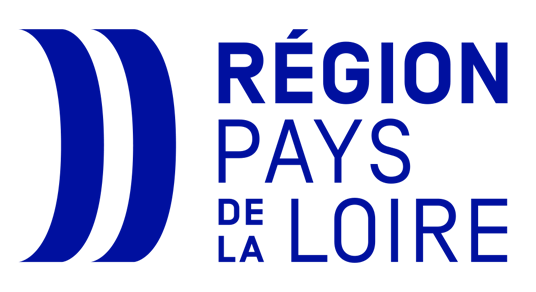A Maritime Symbol Meets Its Limits
In the heart of New York City, where towering glass meets turbulent waters, a diplomatic mission turned tragic. On May 17, 2025, the Mexican Navy’s emblematic tall ship, ARM Cuauhtémoc, collided violently with the Brooklyn Bridge during what was supposed to be a routine departure. The crash resulted in the deaths of two crew members, over two dozen injuries, and raised serious questions about the reliability of traditional naval diplomacy in a modern, high-risk world.
The incident has become a diplomatic flashpoint. It occurred just weeks into President Donald Trump’s second term and barely five months after Claudia Sheinbaum became Mexico’s first female president. The resulting fallout is already reverberating across both countries’ defense and foreign ministries. But it is also reshaping the conversation about maritime symbolism, soft power, and international security at a time when global alliances are being tested from Ukraine to the South China Sea.
A Vessel with Diplomatic Purpose and Historical Prestige
The Cuauhtémoc is no ordinary ship. Launched in 1982, this three-masted barque has long functioned as Mexico’s floating embassy—promoting not only naval training but also international camaraderie. It has docked in over 60 countries, hosted heads of state, and represented Mexico in global maritime festivals. With its white sails, gleaming wood, and brass railings, it evokes an age when seafaring was synonymous with prestige and power.
Its name carries symbolic weight: Cuauhtémoc was the last Aztec emperor, a symbol of resistance against conquest. The ship’s very presence in a foreign port is meant to convey national pride, heritage, and a diplomatic hand extended across oceans. For many Mexicans, Cuauhtémoc is more than a ship—it is a national icon.
This visit to New York was part of a broader transatlantic tour encompassing Spain, Morocco, Canada, and the U.S., intended to celebrate the bicentennial of Mexico’s navy. Its stay in Manhattan included ceremonial visits, cultural exchanges, and naval receptions. Everything was proceeding smoothly—until it wasn’t.
The Moment Everything Went Wrong
According to preliminary findings from the U.S. Coast Guard and the National Transportation Safety Board (NTSB), the Cuauhtémoc lost partial engine power just minutes after departing its berth at South Street Seaport. Pushed by strong river currents and with limited propulsion capability, the ship began drifting toward the Brooklyn Bridge.
In those critical moments, emergency tugboats were scrambled—but too late. The 42-meter masts of the vessel struck the underside of the bridge. Screams erupted from the deck. Splintered wood, metal fragments, and rigging fell into the East River and onto the ship itself. Two naval cadets were killed instantly; one was from Mexico, the other a Peruvian exchange officer. Twenty-five others suffered injuries ranging from fractures to concussions.
The Brooklyn Bridge, though structurally resilient, sustained aesthetic and cable damage. Authorities closed it for five hours before reopening it to limited traffic. Surveillance footage and citizen videos quickly circulated online, turning the incident into a viral tragedy.
Technical Failures, Human Responsibility
Marine investigators are now focusing on two key hypotheses: mechanical failure and outdated ship infrastructure. The Cuauhtémoc, while meticulously maintained, is a 43-year-old vessel. Several former officers have come forward anonymously, stating that the ship has struggled with propulsion issues since at least 2020. “It’s a beautiful ship,” said one retired naval engineer, “but it sails with 20th-century systems in a 21st-century world.”
Others question the training of the crew or whether there was sufficient coordination with New York harbor officials. Maritime experts are scrutinizing the decision to proceed with departure under suboptimal tidal and weather conditions. Was pressure placed on the crew to adhere to a diplomatic schedule, even when safety margins were thin?
The Mexican Navy has launched an internal review. President Sheinbaum, speaking to the press in Spanish and English, called the incident “a national mourning and a logistical failure,” promising “transparency, accountability, and cooperation with the United States.”
Political Repercussions on Both Sides of the Border
The tragedy quickly spilled into political arenas. President Trump, in a brief televised address, offered condolences to the families and praised New York emergency responders. “This was a terrible accident,” he stated. “And we will investigate every detail.” Behind the scenes, however, White House officials are reportedly frustrated by the lack of early warning from the Mexican side and are considering reviewing docking procedures for foreign military vessels.
Trump allies in Congress have seized the opportunity to criticize port security. Senator Tom Cotton accused the Department of Homeland Security of “welcoming naval guests without proper oversight,” while House Republicans demanded an emergency review of New York’s maritime risk assessment protocols.
In Mexico, the incident has become a political weapon. Opposition senators from the conservative PAN party accused the Sheinbaum administration of mismanaging the navy’s budget and pushing symbolic global tours at the expense of maintenance and safety. “This was not diplomacy—it was a vanity tour,” said Senator Lilly Téllez.
At stake are not just reputations, but future cooperation programs. Already, plans for a Mexican naval visit to Baltimore in June have been suspended. Joint exercises scheduled with the U.S. Navy are now under review.
Rethinking Naval Soft Power
The deeper question arising from this tragedy is whether the use of traditional tall ships in diplomacy still makes sense. Are these majestic vessels—built for symbolic presence—safe in modern, crowded ports governed by fast currents, giant cargo ships, and strict traffic control?
For Mexico, Cuauhtémoc was a soft-power jewel. But in one afternoon, it became a crisis point. Other nations may now reconsider similar missions. Brazil’s Cisne Branco, Chile’s Esmeralda, and even France’s own Belem may soon face stricter review procedures.
Meanwhile, public opinion has shifted. While many mourn, others question the point of sending historic vessels across oceans when satellite diplomacy, digital summits, and AI-driven security partnerships seem more fitting for the times.
From Tribute to Caution
The tragedy of May 17 will not soon be forgotten. It was a moment where past met present in the worst possible way—where history collided, literally, with infrastructure. As Mexico recovers, the U.S. investigates, and the world watches, the Cuauhtémoc remains docked, wounded, and silent.
It may sail again. But the image of its snapped masts beneath the Brooklyn Bridge will linger far longer than any diplomatic toast. In an age of rising tensions and tightening alliances, maritime symbolism must evolve—or risk becoming a relic of tragedy.










